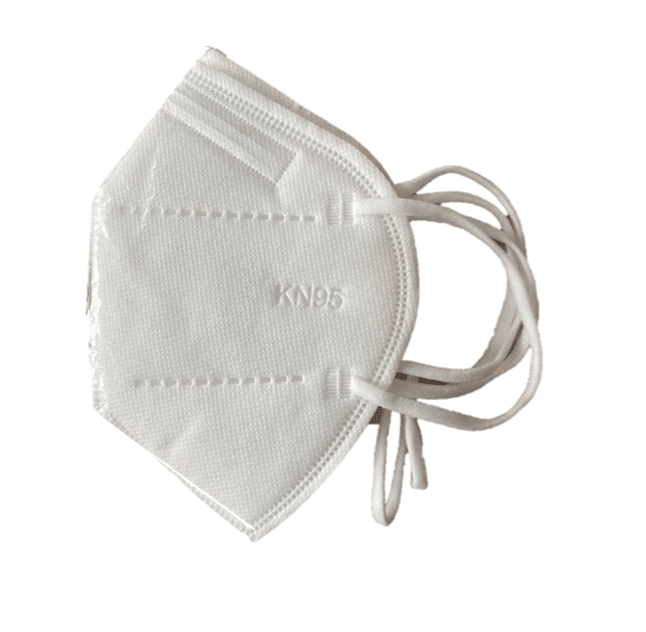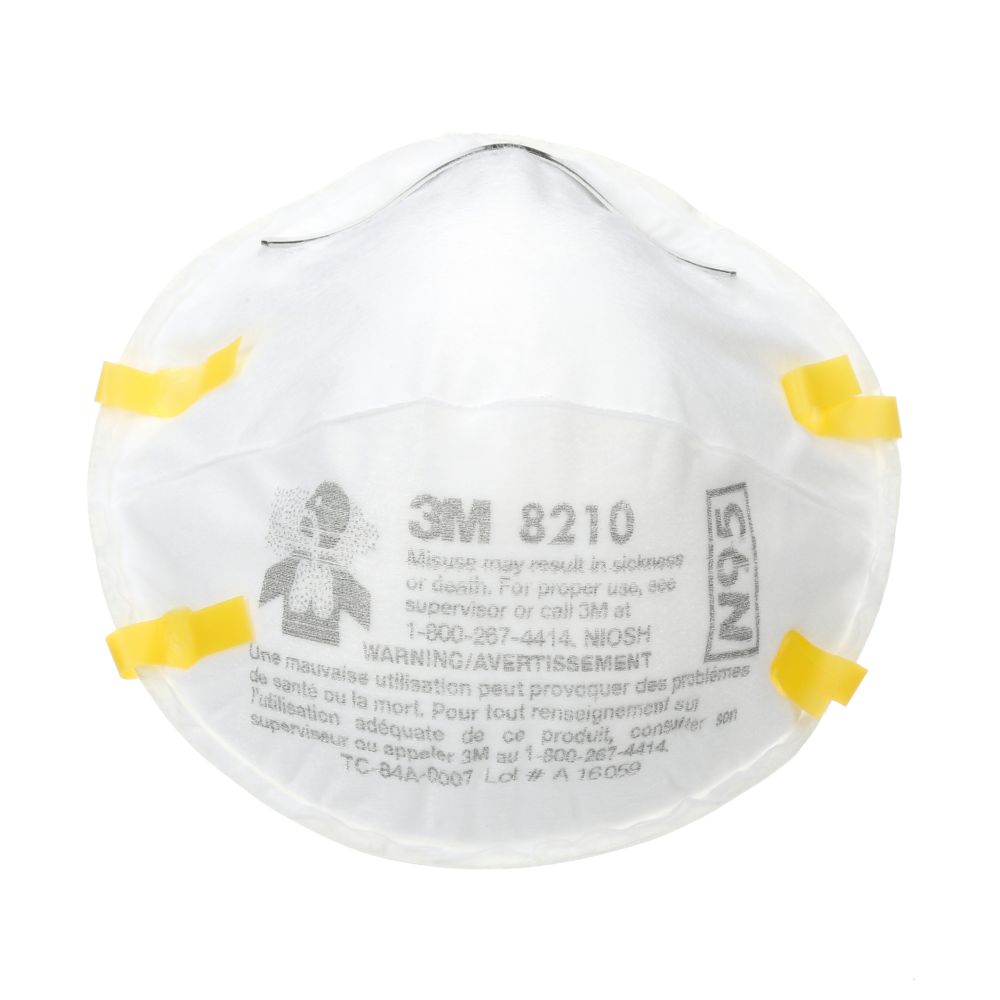Can N95 Fit Test be Extended for 2 Years
Table of Contents
ToggleCan N95 Fit Test be Extended for 2 Years
Can the N95 Fit Test be Extended for 2 Years? Never, Absolutely Not. The WorkSafe BC Regulation 8.40 for Fit Test is clear and decisive. However, a certain group of workers was granted that exact extension. An argument was made that due to the shortages of N95 cloth respirators and compounding this challenge is the requirement as per OHS Regulation, that fit testing be carried out at least once a year. The fit test process results in the respirator being rendered unusable and discarded, placing additional strain on the availability and supply of N95 respirators.
It's simple, the regulations are in place for the Health and Safety of all workers who are required to donn a respirator. The claim that fit testing respirators will leave them rendered unusable and discarded is not true. With the utmost care and attention coupled with cleaning and disinfecting them, a single-use N95 can have its life extended for greater than a single 8-hour day.
Respirator Fit Test MUST be Conducted Annually
The regulations state Respirator Fit Test MUST be conducted annually at a minimum. Of course, there are other criteria when a worker must have a new fit test conducted before a 1-year term is up.
The following are such cases:
- A physical change in a person’s facial structure. Weight gain or loss can cause this or even an injury.
- Using a respirator of the same manufacturer but a different model
- A different respirator from another manufacturer.
- or the same respirator, just a different size
Criteria of a Fit Test
The 1st Reg for Honest Respirator Fit Testing is the Criteria of a Fit Test itself.
The Law Surrounding Respirator Fit Testing
WorkSafe BC Regulation 8.40
Can the N95 Fit Test be Extended 2 Years? WorkSafe BC Regulation 8.40 Fit Test being the authority on the issue is to the point. It states the following:
(1)
A respirator that requires an effective seal with the face for proper functioning must not be issued to a worker unless a fit test demonstrates that the facepiece forms an effective seal with the wearer's face.
(2)
Fit tests must be performed in accordance with procedures in CSA Standard CAN/CSA-Z94.4-02, Selection, Use, and Care of Respirators.
(2.1) A fit test must be carried out
(a) before initial use of a respirator,
(b) at least once a year,
(c) whenever there is a change in respirator facepiece, including the brand, model, and size, and
(d) whenever changes to the user's physical condition could affect the respirator fit.
(3)
Other personal protective equipment that is to be worn at the same time as a respirator and which could interfere with the respirator fit must be worn during a fit test.
United States Centers for Disease Control and Prevention CDC
One of the largest organizations on the planet for the population's health concerns published this in a section entitled Healthcare Respiratory Protection Resources
DHHS (NIOSH) Publication No. 2018-129 (April 2018)
Over 3 million United States employees, in approximately 1.3 million workplaces, are required to wear respiratory protection. The Occupational Safety and Health Administration (OSHA) (29 CFR 1910.134) requires an annual respirator fit test to confirm the fit of any respirator that forms a tight seal on the wearer’s face before it is used in the workplace. This ensures that users are receiving the expected level of protection by minimizing any contaminant leakage into the facepiece. The following are some frequently asked questions about respiratory protection and fit testing.
The largest private sector company that manufactures respirators 3M, has qualified government agencies regulations by saying the following
Overview of the Fit Testing Process
Tight-fitting respirators must seal to the wearer’s face in order to provide expected protection. This includes disposable respirators (also called “filtering facepieces”). Therefore, fit testing is required in the US by the Occupational Safety and Health Administration (OSHA) before a user wears a mandatory respirator on the job, and must be assessed at least annually. In addition, fit tests should be performed:
- Whenever a different size, style, model, or make of respirator is used
- When any facial changes occur that could affect fit, such as significant weight fluctuation or dental work.
Other Provinces and Jurisdictions
We could keep listing province by province clear across Canada, and all would state the same legal parameters with regards to the 1st Regulation for Honest Respirator Fit Testing. A Fit Test must be conducted prior to a worker's initial usage and be re-tested on an annual basis at a minimum. For those reasons, when the Province of British Columbia Ministry of Health issued a POLICY COMMUNIQUÉ, a section on page 5 went against every policy known when it comes to fit testing.
It reads as follows:
Fit Testing for N95 Respirators
"Health authorities facing an imminent shortage of N95 respirators shall allow workers who have had their respirator fit test within the previous 2 years to continue to use respirators without additional testing."
Singed by:
Stephen Brown, Deputy Minister of the Ministry of Health, and Dr. Bonnie Henry, Provincial Health Officer for the Office of the Provincial Health Officer, put forward a directive with a subject line titled "Infection Prevention and Control for Novel Coronavirus (COVID-19)" stating the following as it details "This document outlines Ministry of Health requirements for preventing and controlling novel coronavirus (COVID-19) in health authorities. '
Increasing Works Risk
The action of preventing and controlling novel coronavirus COVID-19 can not be successfully accomplished by increasing the risk factor to their employees. Already explained are the factors why a fit test must be conducted and when. Allowing medical personnel to go 2 years before having another fit test of their respirators will leave an opening for the virus to spread. Below are just some examples of how this can happen. As a professional Respirator Fit Tester, one of the narratives I deliver during an instructional orientation is the reasons why a fit test might need to be conducted before annually.
Facial Structure Change
One thing is true, even though most won't admit to it. We gain and lose weight all the time. Part of the 1st Regulation for Honest Respirator Fit Testing is getting re-tested when this occurs. As well, if a person were to sustain a facial injury, they must be retested for that reason. Put it to you this way. You have a bad tooth and need to have it pulled due to infection. What happens to human tissue during an infection is it tends to swell. Not having an accidental injury or weight gain, still, your face wouldn't be the same as it was during your fit testing.
The result is gaps could form around the mask your using allowing the hazardous substance you need to be protected from gaining access int your body.
Counterfeits
Counterfeits
The common PPE being used is N95. A cloth mask that's non-oil proof and has a capture rate of 95% of the particulars .3-micron and bigger. As there is a shortage of the N95, an influx of masks from overseas has flooded the North American marketplace. Introducing the KN95. Nicknamed "The Beak", this style of mask is its source that has created the opportunity for unsavory elements to ship counterfeits into Canada. A great many of these masks failed a fitness test and by just appearance proved to be fake and well as dangerous to the wearer.
Boxes with no manufacture makings, model numbers, or any identifying marks are to this day still making their way into the marketplace. A 2-year span between fit tests will increase the chances for inexperienced people not knowing if the next disposable KN95 is legitimate or not.
Just a Bad Fit
With over 2000 people fit tested in the medical and dental communities due to the COVID-19 Pandemic, I've come across a lot of KN95s. Other than the filtration factor, what needs to be applied is pressure. The KN95 mask is manufactured with ear loops. This results in most of these masks can't handle the pressure needed against the face to form a seal. The loops break and if by chance then don't, severe discomfort starts from behind the ear.
One device the Nurses came up with was a plastic strip removing the loops from the rear of the ear and directing the pressure to the rear of the head. Good idea, however during extended usage the stretch of the loops plus where they are attached to the mask, joining to a single point behind the head can lead to that area compressing together. The result can be a gap much like the one when wearing a surgical mask.
The solution is to cut the loops and tie the 2 tops together and do the same with the bottom loops. thereby creating the same wearing effect as an N95.
A Disturbing Policy Change
Six years later and the Ministry of health is at it again. Except for this time they did not file a partition. The Ministry of Health issued a " Policy Communique" saying the following:
Health authorities facing an imminent shortage of N95 respirators shall allow workers who have had their respirator fit test within the previous 2 years, continue to use respirators without additional testing.
To actively establish a policy that expands the length of time for re-fit testing is one of the most unsafe actions they could do during a worldwide pandemic. The logic behind such a policy makes absolutely no sense at all. An N95 respirator will never last 2 years in the first place. Therefore since there is a shortage, other respirators like the KN95 will be acquired for use to replace what's gone.
Below is what was published
The Hospital Employees Union, HEU
Can the N95 Fit Test be Extended for 2 Years?
It appairs 13 health care employers, including B.C.’s health authorities attempted to extend annual Respirator Fit testing for the N95. Having partitioned WorkSafe BC for an extension in time, the regulations were upheld.
On April 14th, 2014, The Hospital Employees Union, or HEU reported the following on their website ( has since been removed for unknown reasons. However this is what was posted)
WorkSafeBC has denied a request from 13 health care employers, including B.C.’s health authorities, to amend the required annual fit-testing of N95 filtering facepiece respirators (FFRs) to every two years.
The application was denied “on the basis that the proposal does not afford protection for workers equal to or greater than the protection established by the OHSR provision nor does it have substantially the same purpose and effect.”
In submissions filed by stakeholders – including HEU – the union argued that reducing the required frequency of fit-testing would put workers in jeopardy, adding that risk prevention is strengthened by the annual training and education accompanied by fit-testing.
Ministry of Health POLICY COMMUNIQUÉ published May 19, 2020
Can the N95 Fit Test be Extended for 2 Years?
The Ministry of Health POLICY COMMUNIQUÉ published May 19, 2020, was published online and the section regarding extending the annual fit test for the N95 is a clear violation of WorkSafe BC Regulations 8.40(2.1)(b)
Going Against Established Regulations
The Workers Compensation Board of British Columbia (WorkSafe BC), for many years, has an established regulation as to when a worker needs a fit test for their respirator. It is unclear how this directive by the Ministry of Health will play out, or even if it's legal. One thing is certain, It's a mistake not conforming to the 1st Reg for Honest Respirator Fit Testing.
This Pdf Document has been deleted from the Ministry of Health website. But not before we were able to download and retain a copy.
Infection Prevention and Control for Novel Coronavirus (COVID-19) Published May 19, 2020
It can also be viewed here via The Wayback Machine
N95 2 Year Fit Tests Directive Retired
New Documents Received
Can N95 Fit Test be Extended 2 Years. Tuesday, January 12, 2021, at 8:30 am we received a phone call from an Occupational Hygiene Officer Prevention Field Services of Worker and Employer Services at WorkSafe BC. What transpired was clarification on the new policy for the BC Health Authority. Al Johnson Vice President Prevention Services issued a directive that states amongst other details.
"Workers must have a documented respirator fit test on the same brand, model, and size of respirator within the previous 2 years (24 months) prior to wearing an N95 respirator. Workers who do not have a documented fittest from the previous 24 months must be fit tested in accordance with the OHS Regulation."
However, as you'll see below in the documents, this new directive was set to expire as of Sept.1, 2020. With that being said the 2-year guideline for medical personnel working under the Health Authority has been retired. Yet, anyone who did receive a Respirator Fit Test for their N95 mask between May 19, 2020, and September 1, 2020, would be grandfathered for a 2-year re-fit test directive change.
SO, Can N95 Fit Test be Extended for 2 Years? NO....Absolutely Not
Authority of Senior Vice President WorkSafe BC
Vice President directives have expired.








Pingback: 10 FAQ On Respirators Masks Fit Testing